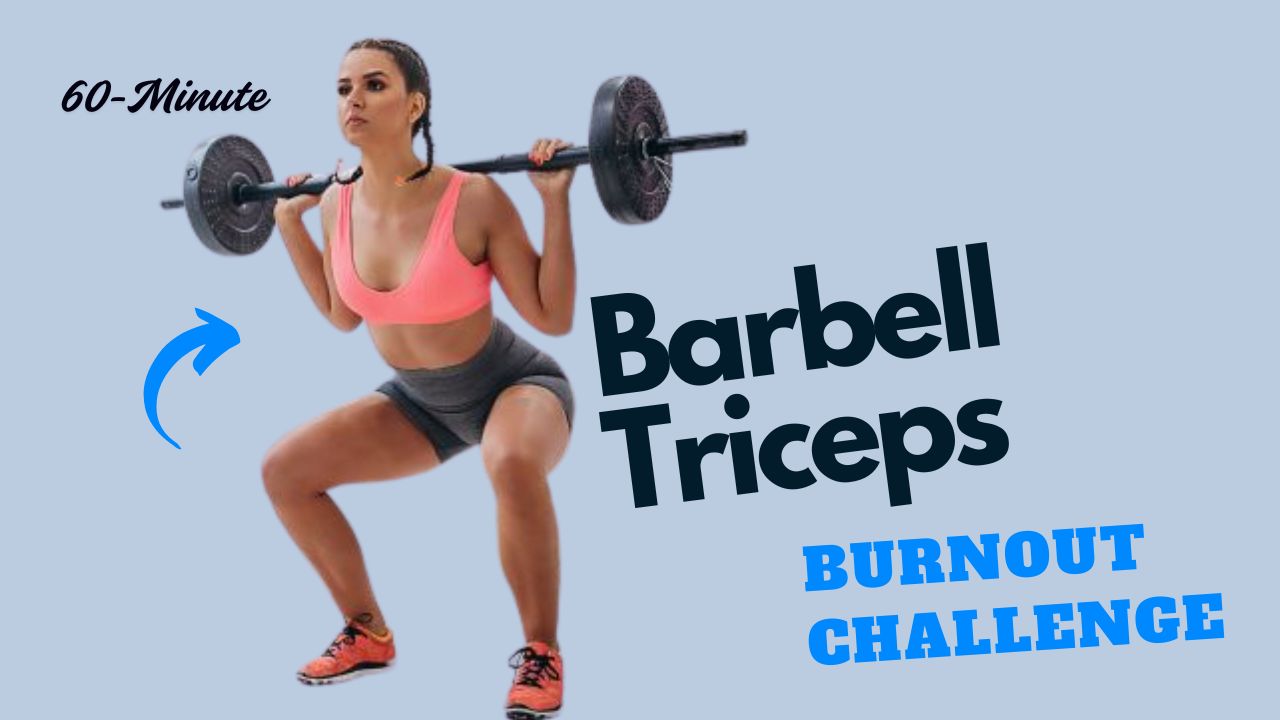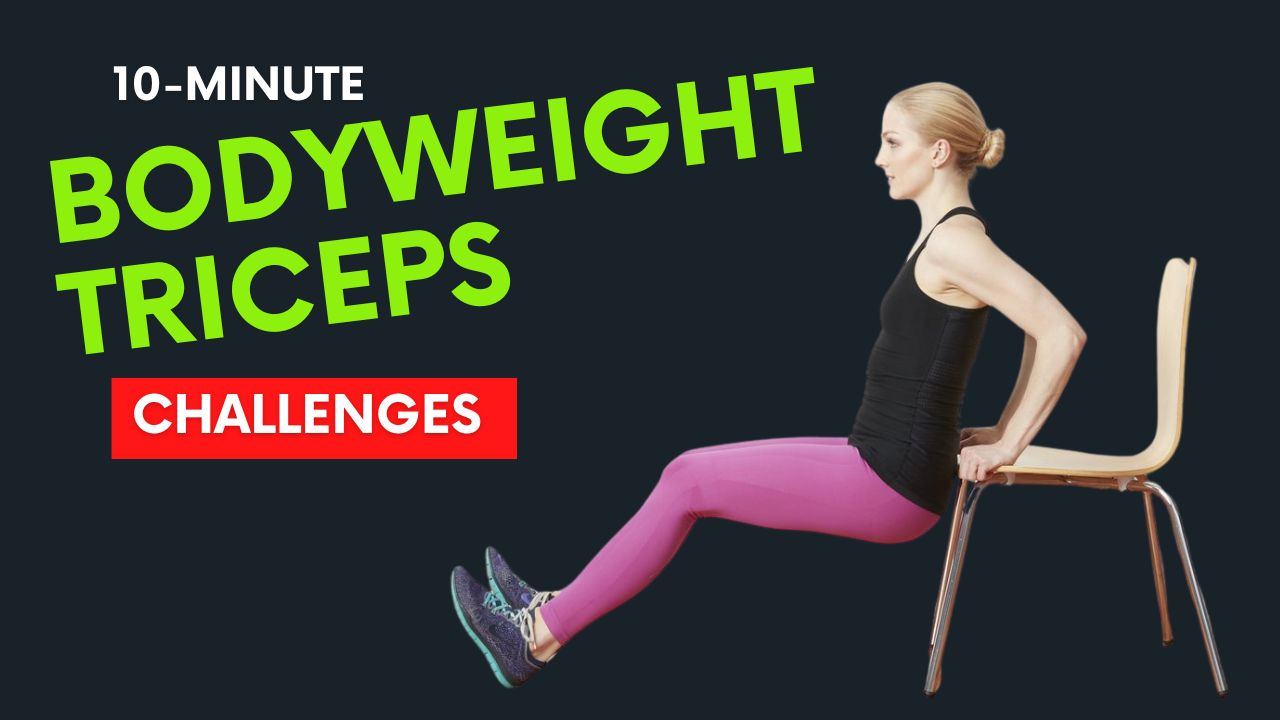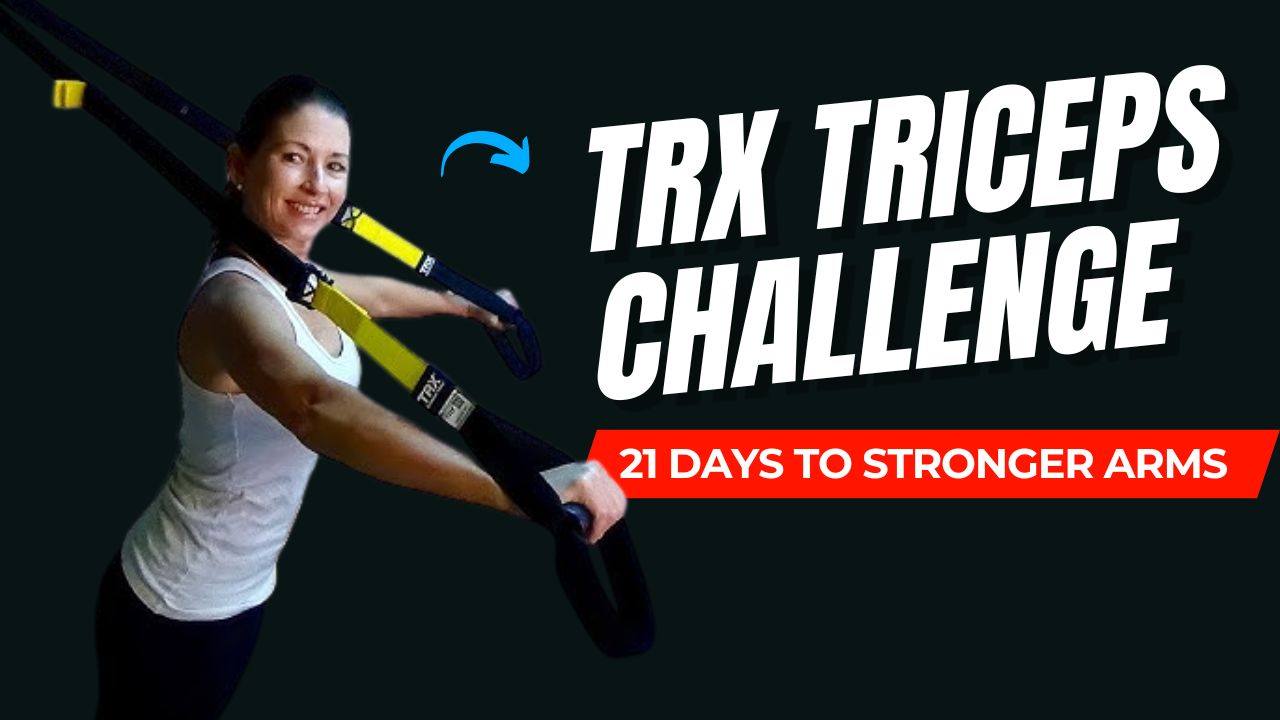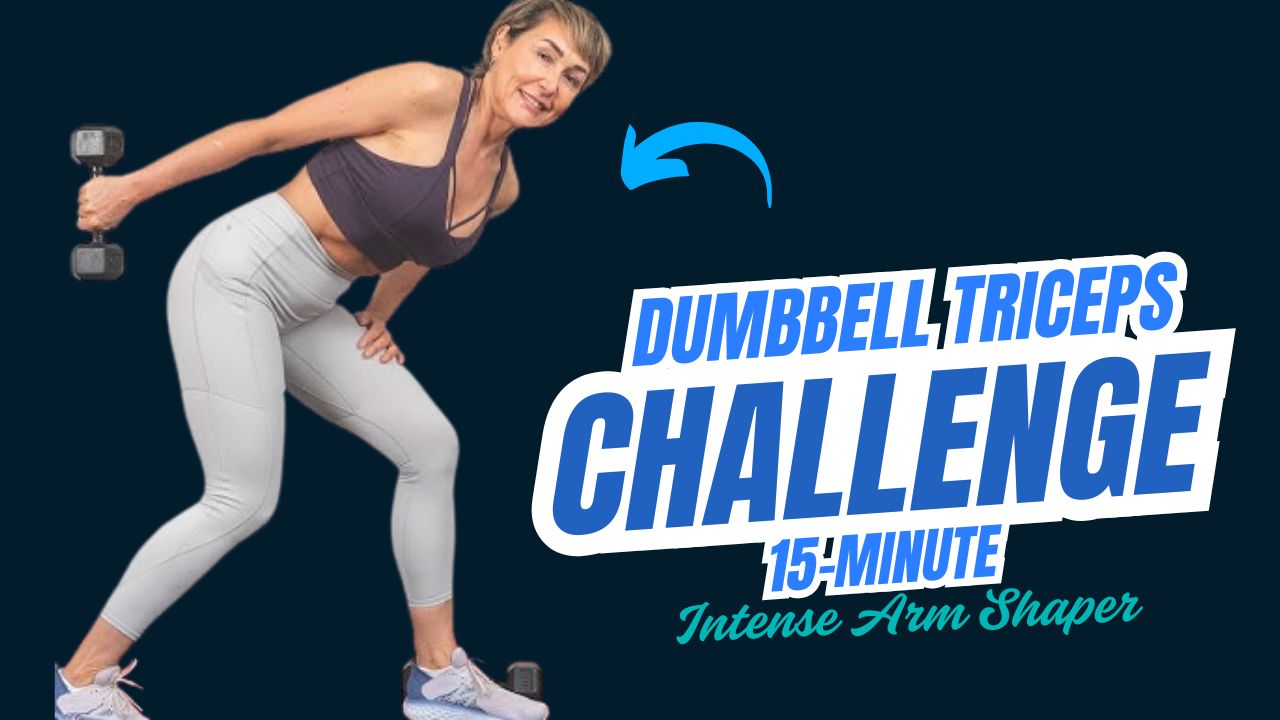When it comes to upper body workouts, the biceps often steal the spotlight. But did you know that your triceps make up nearly two-thirds of your arm’s muscle mass?
That means strong, well-conditioned triceps not only help you build impressive arm size but also provide stability, power, and injury prevention for daily activities and athletic performance.
Your triceps play a crucial role in movements like pushing, throwing, or pressing overhead. Neglecting them can create muscle imbalances, making you more prone to elbow strain, shoulder instability, and even wrist pain.
This 3-Day Medicine Ball Triceps Challenge is designed to combine strength, control, and injury protection. Using just one versatile tool—the medicine ball—you’ll unlock explosive strength while reducing the risk of overuse injuries.
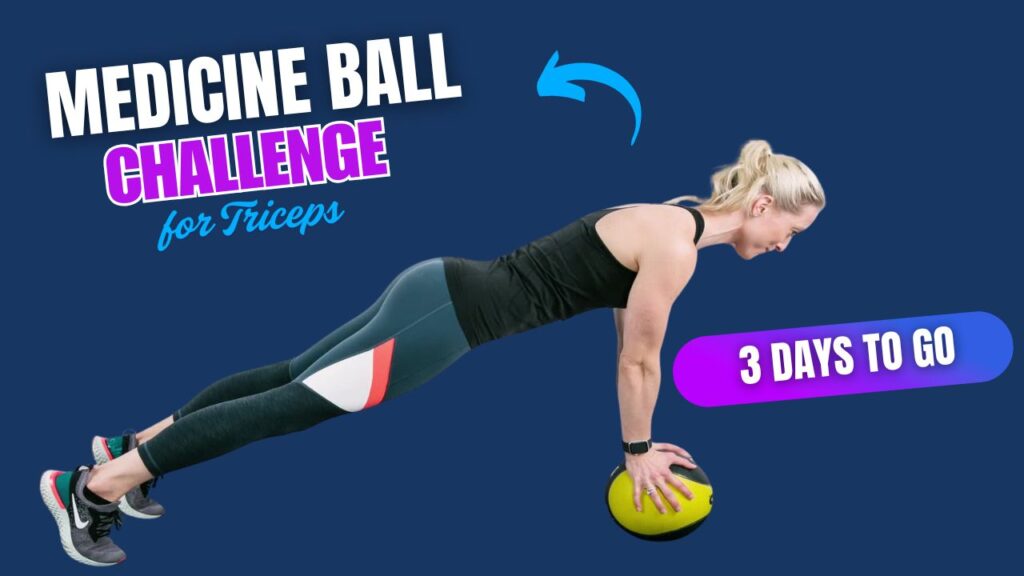
Table of Contents
Why Use a Medicine Ball for Triceps Training?
- Dynamic Resistance: Unlike dumbbells, a medicine ball can be thrown, pressed, or rolled, engaging multiple stabilizing muscles.
- Joint-Friendly Training: The shifting load builds joint resilience, particularly in the elbows and shoulders.
- Functional Strength: These movements mimic real-life pushing and athletic motions.
Do you know? Ancient Greek athletes used primitive versions of medicine balls, called “spheres of sand,” to train for wrestling and Olympic competitions over 2,000 years ago.
What Can Happen After 30 Days of This Challenge
| Physical Changes | Performance & Strength Improvements | Health & Injury Benefits |
|---|---|---|
| Noticeably stronger and more toned triceps | Increased pushing power in daily activities and workouts | Improved elbow and shoulder joint stability |
| Leaner, more defined arms due to consistent muscle activation | Enhanced endurance for upper-body exercises | Reduced risk of triceps and shoulder injuries |
| Better overall upper arm shape and proportion | Ability to lift heavier weights or medicine balls safely | Improved posture and reduced shoulder strain |
| Slight improvement in chest and shoulder definition due to compound movements | Greater explosiveness in sports or functional movements | Less muscle imbalance between biceps and triceps |
| Increased core engagement and stability during exercises | Better coordination in throwing, pushing, and overhead motions | Enhanced recovery from upper-body workouts |
| Improved flexibility and range of motion in elbows and shoulders | More efficient energy use during repetitive movements | Reduced chronic pain or discomfort from weak triceps |
Do’s and Don’ts of the 3-Day Medicine Ball Triceps Challenge
| Do’s | Don’ts |
|---|---|
| Warm up your shoulders, elbows, and wrists before starting. | Don’t skip warm-up—cold joints are more prone to injury. |
| Start with a light medicine ball to learn proper form. | Don’t choose a heavy ball right away—it compromises technique. |
| Keep elbows tucked close during push-ups and extensions for maximum triceps activation. | Don’t flare your elbows outward—this shifts stress away from triceps and onto shoulders. |
| Perform each rep slowly and with control, especially on overhead moves. | Don’t rush through exercises or let momentum take over. |
| Engage your core to stabilize the body during push-ups, tosses, and slams. | Don’t let your hips sag or arch excessively—it strains the lower back. |
| Breathe consistently: exhale on exertion (press/slam), inhale on lowering. | Don’t hold your breath—it reduces endurance and stability. |
| Rest 45–60 seconds between sets to recover strength. | Don’t jump into the next set without adequate rest—it reduces performance. |
| Focus on progressive overload (increase reps, sets, or weight gradually). | Don’t do the same routine for months without adjustments—you’ll hit a plateau. |
| Use controlled power for slams and tosses to avoid elbow strain. | Don’t hyperextend your elbows when throwing or slamming the ball. |
| Listen to your body—stop if you feel sharp pain in elbows or shoulders. | Don’t push through serious discomfort—it can worsen injuries. |
The 3-Day Triceps Challenge Structure
- Day 1: Power & Strength Focus
- Day 2: Endurance & Stability
- Day 3: Injury Prevention & Recovery Activation
Each day uses carefully selected medicine ball exercises targeting the triceps with supportive benefits for shoulders, chest, and core.
Exercises for the 3-Day Challenge
1. Medicine Ball Close-Grip Push-Ups
Why It Works: Narrow hand placement emphasizes triceps more than traditional push-ups, while the unstable ball surface recruits stabilizer muscles.
How To:
- Place both hands on top of a medicine ball and extend your legs into a plank position.
- Keep your elbows tucked close to your ribs as you lower your chest toward the ball.
- Push back up explosively, maintaining a straight line from head to heels.
Tip: Keep your core engaged to avoid sagging hips.
2. Medicine Ball Overhead Triceps Extension
Why It Works: Directly isolates the triceps while also stretching the long head for full activation.
How To:
- Stand tall and hold the medicine ball with both hands overhead.
- Bend your elbows, lowering the ball behind your head.
- Extend your arms upward, pressing the ball back overhead.
Tip: Avoid flaring elbows outward—keep them tight beside your head.
3. Medicine Ball Floor Press
Why It Works: A joint-friendly alternative to heavy bench pressing, giving excellent triceps activation with controlled pressing.
How To:
- Lie flat on your back with knees bent and feet on the floor.
- Hold the medicine ball with both hands at chest level.
- Press the ball upward until your arms are fully extended.
- Lower slowly back to the chest.
Tip: Focus on squeezing your triceps at the top of the press.
4. Medicine Ball Kickbacks (Kneeling)
Why It Works: Strengthens triceps while reinforcing elbow control, reducing strain during repetitive arm movements.
How To:
- Kneel on one knee, holding a medicine ball with one hand.
- Bend your elbow to 90 degrees by your side.
- Extend your arm fully backward, straightening your elbow.
- Return slowly to starting position.
Tip: Use lighter medicine balls for better form rather than chasing heavy weight.
5. Medicine Ball Slams (Triceps-Powered)
Why It Works: A high-intensity movement that builds explosive pushing power and releases stress.
How To:
- Stand with feet shoulder-width apart, holding the medicine ball overhead.
- Engage your triceps and core, then forcefully slam the ball to the ground.
- Squat to pick it up and repeat quickly.
Tip: Keep arms slightly bent and use controlled power to avoid elbow overextension.
6. Medicine Ball Diamond Press
Why It Works: Mimics the diamond push-up, but with more controlled pressing that spares the wrist and emphasizes the inner triceps.
How To:
- Lie on your back with knees bent.
- Hold the medicine ball in both hands directly above your chest.
- Lower the ball in a straight path to the chest.
- Press upward with elbows staying close to your torso.
Tip: Keep movements slow to maximize triceps contraction.
7. Medicine Ball Rolling Triceps Extensions
Why It Works: A unique hybrid between a skull crusher and push-up, excellent for joint conditioning.
How To:
- Begin in a push-up position with hands on the medicine ball.
- Roll the ball forward slightly by bending your elbows.
- Extend your arms back to the starting position.
Tip: Start small with range of motion until you build strength.
8. Medicine Ball Wall Throws (Chest to Triceps Transfer)
Why It Works: Combines chest drive with triceps follow-through for functional strength.
How To:
- Stand facing a wall, holding the medicine ball at chest height.
- Push the ball explosively forward, finishing with a triceps extension.
- Catch the rebound and repeat.
Tip: Stand close enough to control rebounds without losing form.
9. Medicine Ball Overhead Toss (Behind You)
Why It Works: Builds overhead pressing strength and triceps drive while training full-body coordination.
How To:
- Hold the medicine ball overhead with both hands.
- Bend slightly at the knees and toss the ball backward over your head.
- Retrieve and repeat.
Tip: Perfect for athletes who want to improve throwing or overhead strength.
Myths vs Facts: Triceps Training
- Myth: Heavy bench presses are enough for triceps.
- Fact: While bench presses engage triceps, isolation and functional moves like medicine ball drills ensure balanced development and joint protection.
- Myth: Triceps don’t need much variety.
- Fact: The triceps have three distinct heads, and variety ensures all are effectively trained.
The 3-Day Medicine Ball Triceps Challenge Routine
Duration: 3 Days (Perform on Alternate Days)
- Each workout takes about 30–40 minutes.
- Perform 3–4 sets per exercise with 10–15 reps depending on fitness level.
- Rest 45–60 seconds between sets.
Day 1: Power & Strength
- Medicine Ball Close-Grip Push-Ups
- Medicine Ball Overhead Triceps Extension
- Medicine Ball Floor Press
- Medicine Ball Slams
Day 2: Endurance & Stability
- Medicine Ball Kickbacks
- Medicine Ball Rolling Triceps Extensions
- Medicine Ball Diamond Press
- Medicine Ball Wall Throws
Day 3: Injury Protection & Recovery
- Medicine Ball Overhead Toss
- Medicine Ball Kickbacks (light load)
- Medicine Ball Floor Press (slow tempo)
- Medicine Ball Close-Grip Push-Ups (low reps, controlled)
Challenge Table
| Day | Focus Area | Exercises (3–4 sets each) | Reps/Notes |
|---|---|---|---|
| 1 | Power & Strength | Close-Grip Push-Ups, Overhead Extension, Floor Press, Slams | 10–12 reps |
| 2 | Endurance & Stability | Kickbacks, Rolling Extensions, Diamond Press, Wall Throws | 12–15 reps |
| 3 | Injury Protection & Recovery | Overhead Toss, Kickbacks (light), Floor Press (slow), Close-Grip Push-Ups (low reps) | 8–10 reps, controlled |
Conclusion: Keep Building Strong, Resilient Triceps
Your triceps are more than just an accessory muscle—they’re the engine behind your pushing strength, the stabilizers protecting your joints, and the secret to well-balanced arm development.
This 3-Day Medicine Ball Triceps Challenge is your starting point to build not only stronger arms but also a body that moves with more power and less risk of injury.
By following the program, you’re training your muscles to handle both strength and endurance while improving overall joint health. Remember, the goal isn’t just to complete three days—it’s to use these workouts as a foundation for long-term progress.
Challenge Continuation Idea
If you’ve completed the 3-day challenge successfully, here are two simple ways to keep progressing:
- Extend the Challenge to 4–6 Weeks
- Repeat the 3-day cycle weekly, gradually increasing reps or sets.
- Example: Start with 3 sets per move in Week 1, progress to 4–5 sets by Week 4.
- Add Intensity & Variety
- Use a heavier medicine ball after two weeks.
- Add a superset approach: Pair two exercises back-to-back (e.g., Close-Grip Push-Ups + Overhead Triceps Extension).
- Incorporate timed sets—perform each move for 45 seconds instead of counting reps to boost endurance.
- Transition into a Full Upper-Body Plan
- Once your triceps are stronger, combine this challenge with medicine ball drills for shoulders, chest, and core. This creates a holistic functional training program that keeps you progressing while preventing plateaus.
Final Note: Strength isn’t built in a day—it’s earned through consistent effort. Stick with this challenge, track your progress, and continue to push forward.
In just a few weeks, you’ll notice not only stronger arms but also better performance in everyday tasks, sports, and lifting movements.
Frequently Asked Questions (FAQs)
Can I do the 3-Day Medicine Ball Triceps Challenge every week?
Yes. The challenge is designed as a cycle that can be repeated weekly for 4–6 weeks. As you progress, increase either the reps, sets, or the weight of the medicine ball to continue seeing results.
How heavy should my medicine ball be?
Beginners should start with a 4–6 lb (2–3 kg) ball to master form. Intermediate to advanced trainees can use 8–12 lb (4–6 kg) depending on comfort. Always prioritize good form over heavy load.
Will this challenge make my arms bigger?
Yes, with consistency. The triceps make up nearly two-thirds of your upper arm mass, so strengthening them will lead to more visible arm growth over time, especially when paired with proper nutrition and overall strength training.
Is this safe for people with elbow pain?
These exercises are generally joint-friendly, but if you have ongoing elbow pain or a history of injury, consult a healthcare professional first. Use lighter medicine balls and focus on slow, controlled reps to reduce stress.
Can I do this challenge at home without gym equipment?
Absolutely. The only equipment you need is a medicine ball, and a small open space is enough. It’s a perfect at-home workout for building strength and preventing injuries.
Should I combine this with other workouts?
Yes. This challenge is focused on the triceps but doesn’t replace a complete program. Combine it with workouts for chest, shoulders, back, legs, and core for balanced development.
How soon can I expect results?
Most people notice improved strength and muscle endurance in 2–3 weeks. Visible muscle growth usually takes 4–6 weeks, depending on training consistency, diet, and recovery.
Can women do this challenge?
Absolutely. Strong triceps benefit everyone. Women often find these exercises help improve posture, make daily tasks easier, and add lean definition to the arms without creating bulk.
What if I don’t have a medicine ball?
You can substitute with a heavy household object (like a filled backpack or water jug) for some moves, but for dynamic drills (like slams or tosses), a medicine ball is recommended for safety and effectiveness.
How long should I rest after completing the challenge?
Rest at least one day between workouts (e.g., do it Monday–Wednesday–Friday). After completing the 3-day cycle for a few weeks, you can take a longer recovery break of 2–3 days before restarting.





